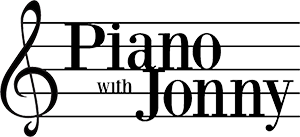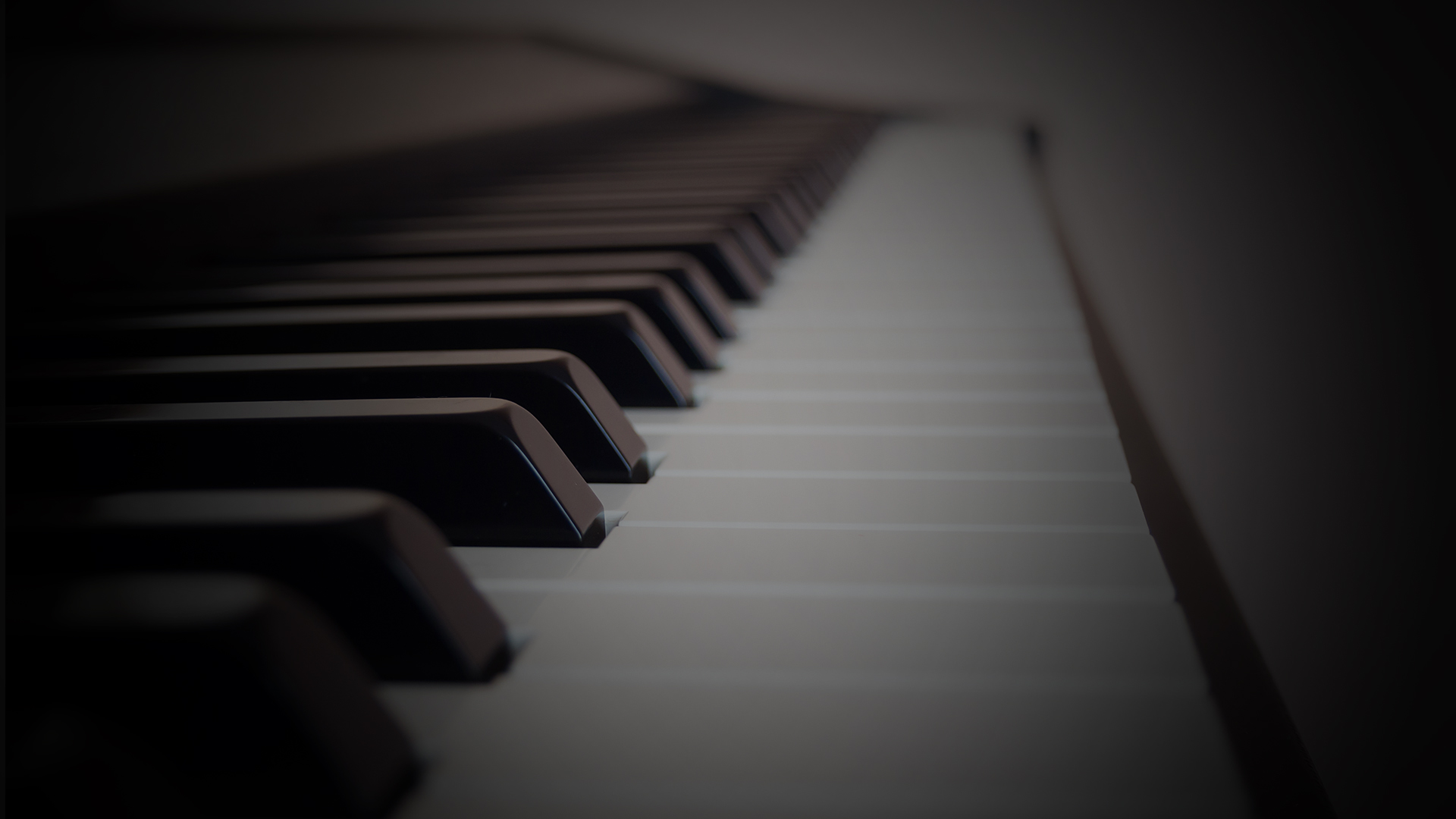Play “Don’t Know Why” (Norah Jones) On Piano
Learning Focus
Music Style
Free Lessons
Get free weekly lessons, practice tips, and downloadable resources to your inbox!
Whether you’re sipping hot coffee or iced tea, waking up or winding down, going to work or going on vacation, Norah Jones’ “Don’t Know Why” creates the perfect vibe for just about any occasion. In today’s Quick Tip, Play “Don’t Know Why (Norah Jones) On Piano, Jonny May helps piano students learn to play this timeless jazz-pop ballad that has been called one of the most beloved songs of the 21st century.¹
- Intro to “Don’t Know Why”
- “Don’t Know Why” Piano Chords
- “Don’t Know Why” Song Analysis
- “Don’t Know Why” Piano Improv Techniques
Intro to “Don’t Know Why”
Norah Jones first recorded a demo of “Don’t Know Why” in October of 2000. Little did she know that this demo take (with the help of overlaid backing vocals and guitar) would later become her debut single in 2002 and the opening track on her first studio album, Come Away With Me. Much less could she have envisioned the overwhelming reception of “Don’t Know Why” and Come Away With Me, which would cause her to sweep the 45th annual Grammy awards in 2003 with a total of 5 Grammy awards, including Record of the Year, Album of the Year, Song of the Year, Best New Artist and Best Female Pop Vocal Performance.²
Norah Jones
“Don’t Know Why” (2002)
“Don’t Know Why” was originally written and recorded in 1999 by guitarist and songwriter Jesse Harris. Norah Jones met Harris a year earlier, in 1998, when she was a student at the University of North Texas. The two struck up a friendship and became frequent collaborators after Harris convinced Jones to move to New York to further pursue her music career in 1999.³ In fact, it is Harris who plays guitar on Norah’s preeminent cover of “Don’t Know Why.”
“It was a demo, but…if it sounds good and everybody likes it, no point in trying to make it too perfect or anything—I think that’s the problem…that’s why a lot of popular music sounds over perfected and not spontaneous.” ⁴
—Norah Jones
Over twenty years have passed since Norah Jones released “Don’t Know Why” and the single recently reached triple-platinum certification.⁵ Moreover, Come Away With Me has sold over 27 million units. In all, Jones’ total album sales now exceed 50 million.⁶
“Don’t Know Why” Piano Chords
In today’s tutorial, Jonny May shares a fun and accessible solo piano performance of Norah Jones’ “Don’t Know Why” in the key of B♭ major—just like Norah Jones’ recording. Due to publishers’ restrictions, the arrangement that appears in the video is available through our partners at MusicNotes.com. However, PWJ members can download a PDF containing the “Don’t Know Why” examples that appear in this lesson as well as several backing tracks. These resources appear at the bottom of this page after logging in with your membership. In addition, members can transpose the chords for “Don’t Know Why” to any key using our Smart Sheet Music.
The following chord chart contains piano diagrams for all of the chords you’ll want to know to play “Don’t Know Why” by Norah Jones.
Now, let’s examine how these chords are arranged in the verse section of “Don’t Know Why,” which we’ve nicknamed here The Norah Jones Progression.
The Norah Jones Progression
The following chord progression forms the basis for the verse section of “Don’t Know Why.”

Even though “Don’t Know Why” is in the key B♭ major, you may have noticed that several of the chords in this progression are not native to B♭ major. For instance, the chords B♭7, D7 and C9 (which are all dominant chords) are from all outside of the key. Nevertheless, these chords sound great in “Don’t Know Why” because they resolve perfectly to diatonic chords within the key by means of a passing chord technique called secondary dominants. What’s even more noteworthy is that the chords transition smoothly by means of beautiful voice leading that descending chromatically throughout the entire progression.
The Norah Jones Progression Reharmonized
The solo piano arrangement of “Don’t Know Why” that Jonny demonstrates in today’s Quick Tip tutorial contains some subtle harmonic variations to The Norah Jones Progression. Let’s take a listen.

In particular, Jonny opts to replace several of the secondary dominants with tritone substitutions instead, which is a different type of passing chord technique that commonly occurs in jazz. In order to understand this technique, you must first know that in music theory, the term tritone refers to a intervallic distance of three whole steps. For example, the notes B♭ and E♮ are three whole steps are apart on the piano. Therefore, tritone substitution occurs when an arranger swaps out dominant 7th chords whose roots are a tritone apart. For instance, in the first bar, Jonny replace B♭7 with E13(♭9), which is essentially a jazzy-sounding version of E7. Another such “tritone sub” occurs in the second bar, where Jonny has replaced D7 with A♭9 instead.
For a deep dive on tritone substitution and other beautiful harmonic embellishments, check out the following course:
🔎 Passing Chords & Reharmonization 2 (Advanced)
“Don’t Know Why” Song Analysis
In this section of today’s lesson, we’ll examine the larger structure and form of “Don’t Know Why.” Broadly speaking, the song has two main sections, which are designated as the A section and the B section in our arrangement. The A section is used for the verses, which operate as the primary storytelling mechanism in a song. By contrast, the B section of “Don’t Know Why” is the bridge, which contains contrasting material that draws the listener further into the story and keeps them from losing interest.
Chord Changes & Harmonic Function
The following lead sheet shows the chord changes that Jonny uses to perform “Don’t Know Why” in today’s tutorial. You can used the embedded media player to listen to a “Don’t Know Why” backing track and follow along with the sheet music.

Arrangement Structure
When performers and recording artists perform covers of popular songs, they often personalize their arrangements to make them their own. This is especially common when a tune is performed as an instrumental solo. For instance, the version of “Don’t Know Why” that Jonny performs in today’s lesson uses a simplified structure as compared to Norah Jones’ version. Specifically, Jonny’s arrangement uses a simple ABA form and concludes with a tag ending.
Simplified Song Structure
Ironically, the original form of “Don’t Know Why” is a bit unusual. For example, the second and third verses are each eight bars long, but the first verse is ten bars long because it contains a two-bar tag. In addition, the bridge section (which is usually marked by a brief modulation to different key) typically occurs just once in a pop song. However, in “Don’t Know Why,” the B section, which modulates to G minor, occurs twice. Therefore, some refer to this section as a chorus or a refrain. After Norah takes a piano solo over the A section, she transitions into the fourth verse, which is another A section elongated by two tags for a total of twelve bars. Therefore, the song structure for Norah Jones’ “Don’t Know Why” would look something like the following song diagram.
“Don’t Know Why” Song Structure
Of course, after you’ve learned the two primary sections, you can expand or contract your own performance of “Don’t Know Why” however you want to suit your own context. For example, you could choose to add an extended solo section. In fact, that’s what we’ll explore in the next section!
“Don’t Know Why” Piano Improv Techniques
Norah Jones’ piano style is a satisfying blend of jazz, blues, pop and country piano techniques. In fact, Jonny has an entire lesson on How to Play Piano Like Norah Jones (Int) that explores her favorite chord colors and frequent use of slip notes. However, in this section, we’ll examine three specific techniques that Norah combines in “Don’t Know Why” to create a signature piano sound:
- the major blues scale
- parallel octaves
- rhythmic anticipations
We’ll explore the first two techniques above simultaneously with an initial exercise for this section.
B♭ Major Blues Scale In Octaves
Many of Norah Jones’ piano lines and fills in “”Don’t Know Why” draw on the sound of the major blues scale, which can be constructed by modifying a major scale according to the scale formula 1–2–♯2–3–5–6. Therefore, in the key of B♭, the major blues scale contains the notes B♭–C–C♯–D–F–G. However, most of Norah’s lines employ this scale in parallel octaves with her hands spaced two octaves apart. This approach results in a mellow and charming melodic treatment that blends the warm sound of the middle register with the bright sound of the upper register.
Try playing the B♭ major blues scale on piano with your hands spaced two octaves apart, as in the following example.

Although the blues scale exercise above doesn’t sound much like Norah Jones just yet, it is an important first step to learning how to play a piano solo like Norah Jones. Next, we’ll add in some slides and rhythmic anticipations to mimic Norah’s unique sense of phrasing.
Norah Jones Style Improv Phrasing
Norah Jones has a remarkable sense of phrasing that she uses in “Don’t Know Why” to punctuate many of the musical transitions with sparse piano melodies that feel “just right.” In the following exercises, we’ll discover how she creates these beautiful melodic fragments on piano. The secret is to master rhythmic anticipations.
In music theory, we use the term anticipation to describe a note or a chord that is played just slightly ahead of a strong beat. For example, the strongest pulses in 4/4 time are beats one and three. So then, if we play a rhythmic figure that accentuates the 8th note immediately before beats one or three, we create an anticipation. Therefore, in 4/4 time, an anticipation targets the “and of beat 2” or the “and of beat 4.”
Exercise 1 – Target Note F
The focus of this exercise to build proficiency in playing melodies that anticipate beat one by accentuating the “and of 4,” which Norah Jones seems especially fond of doing in “Don’t Know Why.” Therefore, each motif in this exercise contains a pair of 8th notes on beat 4 which have two unique characteristics:
- The 8th note on beat 4 is ornamented with either a slide or a double slide.
- The 8th note on the “and of 4” targets the note F and is tied across the barline.
In addition, it’s important to notice that the first motif of each line targets the note F with ascending motion, whereas the second motif targets the note F with descending motion. Each subsequent pass through the chord progression lengths the motif slightly by adding an 8th note from the B♭ major blues scale in front of the previous example.
For the sake of space and simplicity, we’ve notated the exercise as a single-note melody in treble clef. However, the video demonstration performs the exercise with both hands in the octave above and below the notated pitches.
Let’s take a listen.

As you probably noticed, these lines are now beginning to resemble the phrasing that Norah Jones uses on “Don’t Know Why.” Of course, Norah doesn’t use such a predictable and formulaic scalar approach toward the “and of 4.” Nevertheless, this type of methodical practice helps to build proficiently in playing lines that target the “and of 4” without much preoccupation on how to wind up there. Afterward, you can have fun adjusting the melodic contour of the approach.
Let’s try another exercise with a different target note.
Exercise 2 – Target Note B♭
The following exercise targets the note B♭ on the “and of 4” in a similar manner to Exercise 1. Notice that at the end of the fourth line, we begin taking everything up an octave to keep from descending too low on the keyboard.

In you’ve made it this far, give yourself a pat on the back! Now it’s time to try some free improvisation over a backing track. If you’re logged in with your membership, look for the backing track that specifically loops the A section repeatedly.
Norah Jones Style Improvisation
We’ll conclude today’s lesson with an improv demonstration in the style of Norah Jones over the chord progression from “Don’t Know Why.” To get that signature Norah Jones sound, be sure to keep in mind the three techniques we’ve explored: (1) the major blues scale, (2) parallel octaves, and (3) rhythmic anticipations.
Conclusion
Congratulations, you’ve completed today’s lesson on Play “Don’t Know Why” (Norah Jones) on Piano. As a result, you’ve gained valuable experience exploring essential concepts and techniques that will guide you as a creator and performer at the piano!
If you enjoyed today’s lesson, then you’ll love the following PWJ resources:
Courses
Quick Tips
- How to Play Piano Like Norah Jones (Int)
- Diatonic Chords – The Complete Guide (Int)
- Passing Chords: 5 Levels (Beginner to Pro)
- Chord Extensions – The Complete Guide (Int)
- Beginner Guide to Improvise Piano (Beg)
- 3 Steps to Play Contemporary Folk Music on Piano
- The Happy Chord Progression on Piano (Int)
Pop Piano Learning Tracks
Would you like to comment on this lesson?
Visit this Quick Tip on YouTube
¹ Caldwell, Noah, et al. “Norah Jones Reflects on Early Success, and Latest Album ‘Visions.’” Npr.org, 24 July 2024.
² “Artist: Norah Jones.” Grammy.com.
³ Bowen, Charles. “Don’t Know Why.” Substack.com, The 1937 Flood Watch, 23 Sept. 2022.
⁴ “Norah Jones – Don’t Know Why: The Story behind the Song.” YouTube.com, Top 2000 a Gogo, 1 Feb. 2018.
⁵ “Gold & Platinum.” RIAA, Recording Industry Association of America.
⁶ Varga, George. “Norah Jones’ 2002 Debut Album Won Six Grammys and Sold 27 Million Copies: ‘It Was a a Whirlwind!’ She Recalls.” San Diego Union-Tribune, 24 June 2022.
 Writer
Writer
Michael LaDisa
Michael LaDisa graduated from the University of North Texas with a major in Music Theory & Composition. He lives in Chicago where he operates a private teaching studio and performs regularly as a solo pianist. His educational work with students has been featured on WGN-TV Evening News, Fox 32 Good Day,...
More Free Lessons
Check out this pop contemporary style Hark the Herald with gorgeous chords and gospel embellishments.
Learn a super fun, jazzy version of this classic Christmas tune with crunchy chords and sweet fills.
Whenever I need to "fill in the gaps," this is my go-to technique!
Looking for downloads?
Subscribe to a membership plan for full access to this Quick Tip's sheet music and backing tracks!
Join Us
Get instant access to this Quick Tip and other member features with a PWJ membership!
Guided Learning Tracks
View guided learning tracks for all music styles and skill levels
Progress Tracking
Complete lessons and courses as you track your learning progress
Downloadable Resources
Download Sheet Music and Backing Tracks
Community Forums
Engage with other PWJ members in our member-only community forums
Become a better piano player today. Join with the Holiday Special today!





